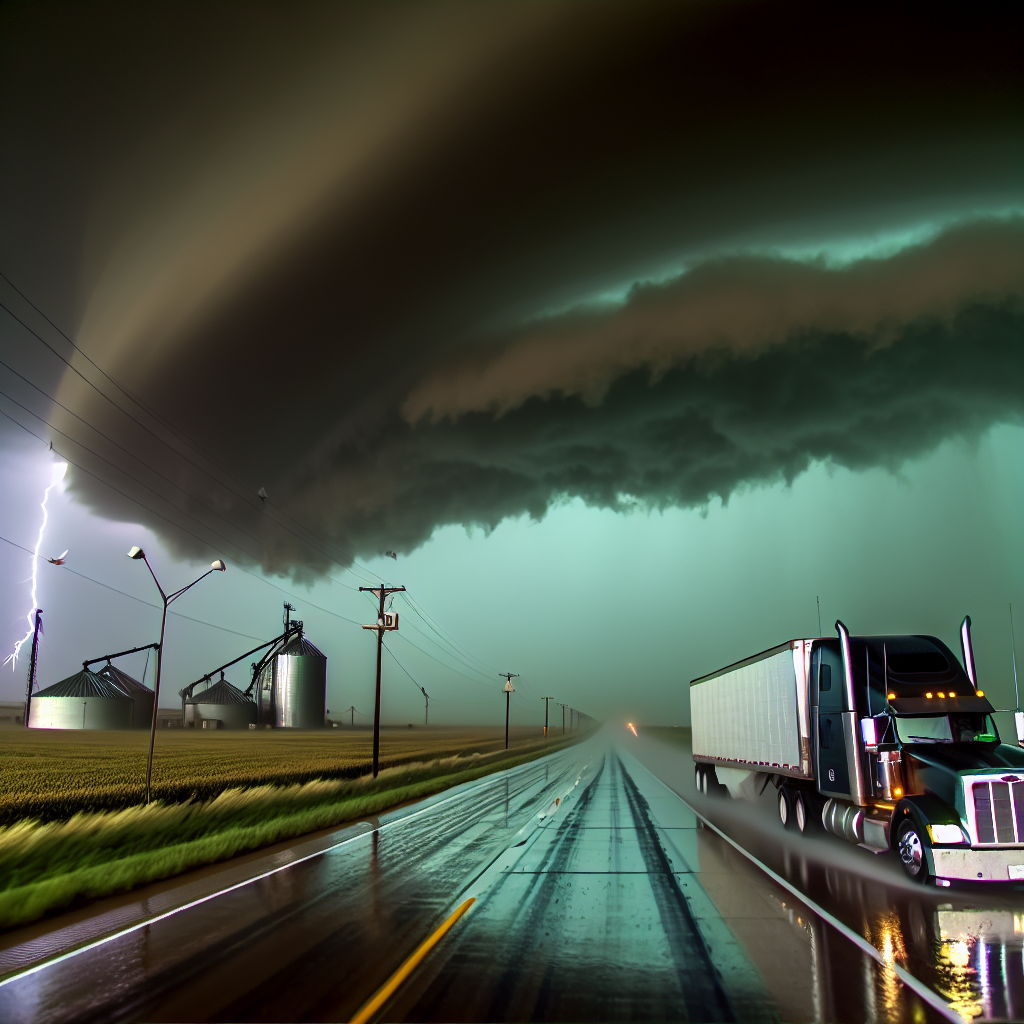Daily Weather Briefing for Truck Drivers — Monday, October 6, 2025
National Overview
Unseasonable warmth continues for much of the central and eastern U.S., with many locations in the 80s to near 90. The West stays more unsettled as periodic fronts bring showers, breezy conditions, and some high-elevation snow. Along parts of the Southeast and the Florida Atlantic coast, long‑period swells keep coastal hazards in play.
Hotspot 1: Inland Northwest Wind Corridor (central/eastern WA into OR/ID)
Strong west winds behind a dry front will create hazardous crosswinds and pockets of blowing dust.
- What to expect: Widespread gusts 35–50 mph; blowing dust in open/agricultural areas reducing visibility at times.
- Key routes:
- I‑90 from George to Ritzville and across the Columbia Basin
- I‑82 Yakima to Tri‑Cities
- I‑84 east of The Dalles into OR/ID
- Additional concerns: Choppy lakes and strong gusts on bridge crossings affecting high‑profile loads.
- Driver notes: Expect sudden crosswind hits exiting cuts and gaps; watch for dust plumes near freshly worked fields and reduce speed accordingly.
Hotspot 2: Northeast NY/VT (Adirondacks, Champlain Valley, northern VT)
Wind Advisory tonight into Tuesday with strong south to west‑southwest gusts.
- What to expect: Gusts 45–50 mph; scattered tree limbs down and spotty power bumps possible.
- Key routes:
- I‑87 (Adirondack Northway)
- I‑89 (Champlain Valley/Green Mountains)
- I‑91
- Driver notes: High‑profile vehicles will feel pronounced buffeting, especially on exposed ridges and lake‑adjacent stretches; be alert for debris on curves and under wooded canopies.
Hotspot 3: South Florida Atlantic Coast (Palm Beach–Broward–Miami‑Dade)
Persistent onshore flow sustains a high rip‑current risk and lingering high surf, with scattered onshore downpours.
- What to expect: Sea spray and pockets of minor coastal flooding in vulnerable spots; brief heavy showers may cause slick travel and ponding near the coast.
- Key corridors:
- Coastal routes and causeways near the I‑95 corridor
- Driver notes: Allow extra braking distance on wet, salt‑sprayed surfaces; watch for lane splash‑over on causeways during higher tides and squalls.
Safety Tip of the Day
When gusts exceed 35 mph, reduce speed, increase following distance, and widen your lane margin on exposed bridges and gaps. If you’re running light or empty, consider delaying passage through the windiest corridors or redistributing/adjusting load securement to lower your center of gravity. In blowing dust or heavy showers, use headlights, avoid sudden lane changes, and be prepared for rapid visibility drops.
Sources: National Weather Service, Washington Post weather desk, NBC5 Burlington/Plattsburgh, The Weather Channel.
This weather briefing was prepared exclusively for truckstopinsider.com.




